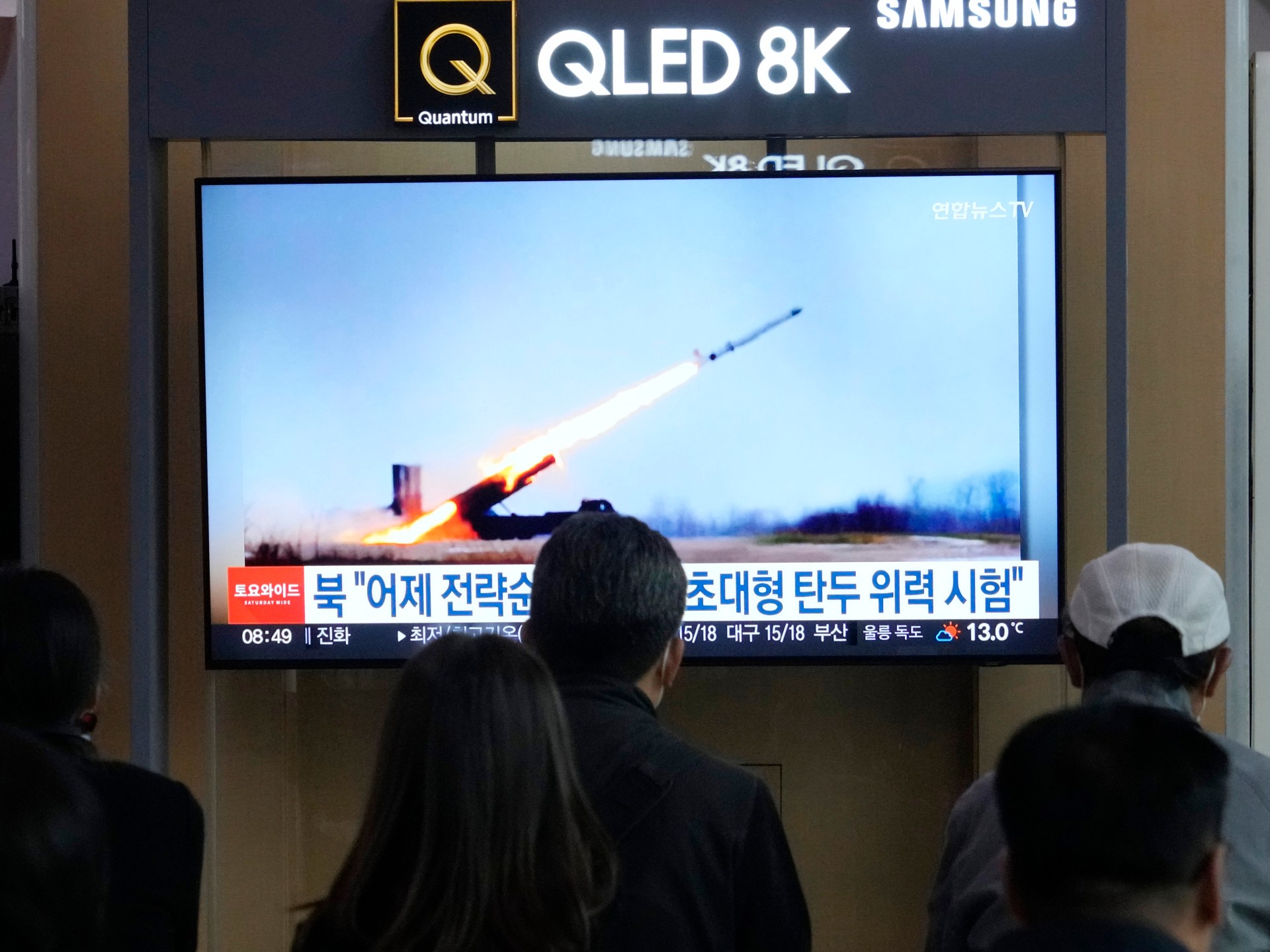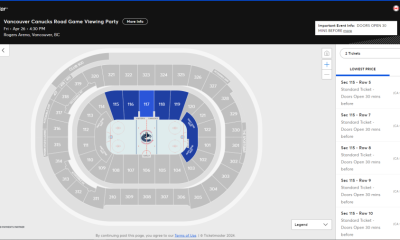Media
Google stymies media companies from chipping away at its data dominance – Reuters Canada
OAKLAND, Calif. (Reuters) – Alphabet Inc’s (GOOGL.O) Google upended plans by European media companies to block it from harvesting data about their readers and slash some of its dominance in online advertising, seven people involved in the talks said this month.
FILE PHOTO: People walk past the logo of Google in Davos, Switzerland January 22, 2020. REUTERS/Arnd Wiegmann/File Photo
Publishers had expected to use data privacy measures going into effect Aug. 15 to bar Google from storing insights about readers, sapping the data advantage that has enabled it to dominate a market filled with advertisers hungry for information to target potential customers.
But Google said it will cut off publishers from a lucrative flow of ads if they follow through with curbing its data collection. Negotiations continue, but Google holds greater leverage because it dominates in both advertising tools and access to advertisers within the $100 billion annual global banner ads market.
“You have to basically implement what (Google) expect from you or you’re out of the market – you can’t do without them,” said Thomas Adhumeau, general counsel at S4M, which competes with Google in software for advertisers.
The publishers’ strategy and the ongoing discussions have not been previously reported.
Google repeatedly has outmaneuvered website owners and its competitors over the last decade to ensure its dominance. In several cases, publishers circumvented Google to attract higher prices for ads, only to see Google reassert itself as an indispensable cog.
Rivals and publishers contend some of Google’s actions were unlawfully anticompetitive, and authorities in United States, the United Kingdom, the European Union and Australia this year are considering pursuing penalties, with some even mulling breaking up Google.
Media giant News Corp (NWSA.O) this year publicly complained to Australian regulators about Google gaining an advantage over publishers by harvesting audience data. Other companies said they will complain if Google does cut off some ads in August.
Google describes the online ads industry as competitive and says its policies aim to square European Union privacy law with how its ad tools work.
PROTOCOL CHALLENGED
The EU’s two-year-old General Data Protection Regulation requires companies to get users’ permission or have a legitimate reason before handling their data. It prompted the Interactive Advertising Bureau of Europe (IAB), a consortium involving Google along with its clients and partners, to develop a technical protocol known as the Transparency and Consent Framework (TCF) for ensuring all of them had the appropriate approvals from consumers.
IAB Chief Executive Townsend Feehan said that pushed by major publishers, the consortium last year agreed to ask users for two separate permissions previously tied together: one to be shown personalized ads, the other to have their personal data collected in a profile.
Some websites and apps planned to omit the second permission. That would starve Google’s profile-building, while still allowing those properties to serve up personalized ads from Google’s clients.
But Google now says consumers must grant both permissions to get personalized ads.
“This is contrary to what was agreed” by the consortium, said Angela Mills Wade, executive director of the European Publishers’ Council.
Chetna Bindra, a senior product manager at Google, said its policy around TCF keeps the status quo.
It “doesn’t change any of our policies for publishers, including our consent policy, which helps ensure users have transparency into and control over how their data is being collected and used to serve personalized ads,” Bindra said.
Some Google rivals such as advertiser software maker MediaMath said they may split the data permissions, giving publishers another way to undercut Google. But they still would have to forgo its bountiful ad supply.
Media groups Axel Springer (SPRGn.H) of Germany and Schibsted (SBSTA.OL) of Norway are among those frustrated with Google’s stance.
“We are concerned when big players seek to dictate the ways we should process data,” said Schibsted Chief Privacy Officer Ingvild Ness. “It’s concerning and problematic if we end up in a situation where certain companies become gatekeepers.”
Google uses software, which millions of partner websites rely on to display ads, to track readers’ location, characteristics and the pages and content they consume. These rich profiles allow marketers to target ads to particular users as they browse online.
Publishers, no matter how vast their own audiences, have struggled to compete with the breadth of Google’s profiles.
“When Google harvests that data and enriches their profiles, Google could be seen as bleeding publishers dry one drop at a time,” said Adrien Thil, chief privacy officer at Smart, which competes with Google in publisher software.
Media companies must share revenue with Google to access the unparalleled number of advertiser clients it attracts with its data. Globally, publishers’ share of Google ad revenue has fallen in half to 16% over the last decade, according to a paper released this month by Dina Srinivasan, an antitrust consultant to News Corp.
Reporting by Paresh Dave; Editing by Greg Mitchell and Lisa Shumaker
Media
Social Media Tips for Event Profs – BizBash


Social media changes rapidly—and what worked last year might not work in 2024. (Just look at X’s, or Twitter’s, dramatic revenue loss after many major platforms have stopped posting or advertising on the platform.) So what does work on social media right now, particularly for event professionals?
“We don’t just want our audience to understand what we do—we want them to know who we are,” says Zoe Haynes, the sales and marketing coordinator for PlatinumXP who oversees the event planning agency’s digital marketing. “Social media has evolved into a space for cultivating relationships and building trust. We utilize various platforms to tell stories—the story of an event transformation, behind the scenes with our production crew, or maybe even some fun office shenanigans with our CEO.”
Haynes’ focus on maintaining a consistent, authentic brand presence was a common theme among event professionals we spoke to about how they’re using social media right now. It’s all about “fostering an ongoing connection with our followers,” agrees Elias Contessotto, social media manager for event production company 15|40.
But remember: Not every platform is created equal. Contessotto stresses the importance of tailoring your approach with each platform—but also not being afraid to experiment a bit to ensure you’re staying ahead of trends and maximizing audience engagement. “By creatively testing new tactics, we gauge audience response and efficacy, gradually integrating successful approaches into our channels,” he explains. “This iterative process empowers us to refine our content strategy continuously, adapting to evolving trends and audience preferences.”
In short, “It’s all about meeting your audience where they’re at,” says Taylor Elliot, vice president of marketing and brand strategy for Shepard Exposition Services. “Social media is such a great tool to amplify your brand voice. I always say as marketers we need to create a system that works for our brand even when we are sleeping, and social media is one of the tools to help achieve this.”
LINKEDIN & INSTAGRAM
From our conversations, LinkedIn and Instagram quickly emerged as the two top platforms in the event industry. “Instagram is our go-to for showcasing stunning event photos—however, LinkedIn holds equal if not greater importance in our strategy,” explains Haynes. “While Instagram captures attention with its visual allure, LinkedIn allows us to dive deeper into industry conversations and build relationships with our peers.”
Contessotto likes to target a B2B audience with 15|40’s LinkedIn presence, posting content that focuses on industry insights, professional networking, and collaborations with studios. “We often share static posts similar to those on Instagram, tagging relevant studios to expand our reach,” he says, noting that LinkedIn posts are often reshared by team leaders and executives. “LinkedIn [also] serves as a prime platform for spotlighting press coverage, award nominations, and industry highlights.”
On Instagram, meanwhile, Contessotto expands 15|40’s content to cater to both B2B and B2C audiences. “We share visually engaging posts that highlight our expertise, industry leadership, and collaborations, appealing to a wider range of followers,” he says. “Instagram will have ‘POV’ content, which is much more personal and requires less high-quality tools to tell our story. I came to 15|40 from an influencer background, and from experience, I notice that more amateur content does better on that platform, like using an iPhone for reels rather than a DSLR camera.”
Heather Rouffe, director of sales at Atlas Event Rental, also appreciates the more personal touch that can come with Instagram. “Through that platform, we strive to educate the industry, create brand awareness, and most importantly to us, show the personal side to our company, brand, and rentals,” she explains. “With so much of the human side of things lost in a digital age, being personable and showing the people behind the brand is very important to us. We find the clients really appreciate the behind-the-scenes content and becoming familiar with the Atlas crew.”
On the flip side, though, that doesn’t mean LinkedIn can’t get a little personal. Al Mercuro, senior account director at trade show display company Genesis Exhibits, prioritizes LinkedIn due to the connections he’s been able to make with marketing directors and event directors at companies he’d like to do business with.
“I try to not promote my company as much as my brand by sharing information that will help them in their jobs—I find I get many referrals this way,” Mercuro notes. “I believe it is also a living resume; before I meet with someone, they will often check out my LinkedIn page to learn more about me. The more you can build up your profile and the number of connections you have adds to your value and makes it attractive to have them want to work with you.”
Jonathan Kazarian, the founder and CEO of Accelevents, also uses LinkedIn to build up his personal thought leadership—and therefore, build awareness of his event management software company. “Ninety-nine percent of what I share on LinkedIn is professional,” he says. “I’ll share something about my personal life to build connection, but that’s not my focus with LinkedIn.”
FACEBOOK, TWITTER (X), TIKTOK, & MORE
In a sign of changing times, most of the event professionals we spoke with are not investing much in Facebook or Twitter (now known as X)—though many are still updating them.
“We push out all of our Instagram content to our Facebook, to ensure our followers and intended audiences on both platforms are receiving similar content,” says Contessotto. “We also maintain our Twitter, or X, channel to share some of our event photos, as well as retweet content that clients we work with post that are captured at our events.”
Mercuro finds that Facebook is still an effective way to reach older generations—but for younger generations, he’s found some success marketing events on TikTok. “I am a board member of a nonprofit concert venue, and we needed to attract a younger audience,” he remembers. “I suggested we work with a local university and their marketing classes to take on a project like our organization to give them real-life experience. They chose to use TikTok to reach the younger demographics in our area, and it has been extremely successful.”
Contessotto agrees that TikTok is naturally very Gen Z-oriented, so content should be tailored accordingly. “We’ve noticed that we typically receive high engagement when our content is celebrity-focused,” he says. “Our team is constantly working to balance out our TikTok pages to include viral content, as well as videos that highlight our diverse portfolio of work to attract the right kind of audience.”
Haynes says she’s still exploring TikTok’s potential for Platinum XP. “I’ve noticed its popularity as a discovery platform,” she says. “It’s a great tool for driving awareness, but we should also consider whether our target audience is active on TikTok.” One tool that Haynes does invest time in? Pinterest. “It’s a powerful tool for SEO purposes. Its visual nature allows us to drive awareness to our website through captivating photos. By sparking curiosity, we encourage users to click through and explore further.”
Media
North Korea conducts test on new ‘super-large warhead’: State media – Al Jazeera English


Pyongyang says new warhead designed for cruise missiles, adding that a new anti-aircraft rocket was also tested.
North Korea has conducted a test on a “super-large warhead” designed for a strategic cruise missile, state media reports, adding that it also launched a new type of anti-aircraft missile.
“The DPRK Missile Administration has conducted a power test of a super-large warhead designed for ‘Hwasal-1 Ra-3’ strategic cruise missile”, KCNA news agency reported on Saturday, referring to North Korea by an abbreviation for its official name – Democratic People’s Republic of Korea.
North Korea also carried out a test launch on Friday afternoon of a “Pyoljji-1-2”, which state media said was a “new-type anti-aircraft missile”.
KCNA added that “a certain goal was attained” through the test without providing further details.
The weapons tests were part of the “regular activities of the administration and its affiliated defence science institutes”, KCNA reported, referencing the operation of “new-type weapon systems”.
The tests “had nothing to do with the surrounding situation”, KCNA added, but did not give any further information.
In early April, North Korea said it had tested a new medium-to-long-range solid-fuel hypersonic missile, with state media sharing a video of it being launched as leader Kim Jong Un looked on.
Cruise missiles are among a growing collection of North Korean weapons designed to overwhelm regional missile defences. They supplement the North’s vast arsenal of ballistic missiles, including intercontinental variants, which are said to be aimed at the continental United States.
Analysts say anti-aircraft missile technology is an area where North Korea could benefit from its deepening military cooperation with Russia, as the two countries align in the face of their separate, intensifying confrontations with the US.
The US and South Korea have accused the North of providing artillery shells and other equipment to Russia to help extend its warfighting ability in Ukraine.
Since its second nuclear test in 2009, Pyongyang has been under heavy international sanctions, but the development of its nuclear and weapons programmes has continued unabated.
Media
Lawmakers pan Ben Gvir for ‘unforgivable’ tweet on alleged Israeli strike on Iran – The Times of Israel


Italian FM says Israel gave US ‘last minute’ warning about drone attack on Iran
CAPRI, Italy (AP) — The United States told the Group of Seven foreign ministers that it received “last minute” information from Israel about a drone action in Iran early this morning, Italy’s foreign minister says.
Italian Foreign Minister Antonio Tajani, who chaired the meeting of ministers of industrialized countries, says the United States provided the information at session this morning that was changed at the last minute to address the suspected attack.
Tajani says the US informed the G7 ministers that it had been “informed at the last minute” by Israel about the drones. “But there was no sharing of the attack by the US. It was a mere information.”
Early Friday, Iran fired air defenses at a major air base and a nuclear site near the central city of Isfahan after spotting drones, part of an apparent Israeli attack in retaliation for Tehran’s unprecedented drone-and-missile assault on the country last weekend.
In a communique following the three-day meeting, the ministers urged the parties “to prevent further escalation.”
-
Media19 hours ago
DJT Stock Rises. Trump Media CEO Alleges Potential Market Manipulation. – Barron's
-
Media21 hours ago
Trump Media alerts Nasdaq to potential market manipulation from 'naked' short selling of DJT stock – CNBC
-
Investment20 hours ago
Private equity gears up for potential National Football League investments – Financial Times
-
Real eState12 hours ago
Botched home sale costs Winnipeg man his right to sell real estate in Manitoba – CBC.ca
-
News18 hours ago
Canada Child Benefit payment on Friday | CTV News – CTV News Toronto
-
Business20 hours ago
Gas prices see 'largest single-day jump since early 2022': En-Pro International – Yahoo Canada Finance
-
Art23 hours ago
Enter the uncanny valley: New exhibition mixes AI and art photography – Euronews
-
Art22 hours ago
Explore local comedy, art and music: Five things to do this weekend in Saskatoon, April 19-21 – Saskatoon Star-Phoenix








